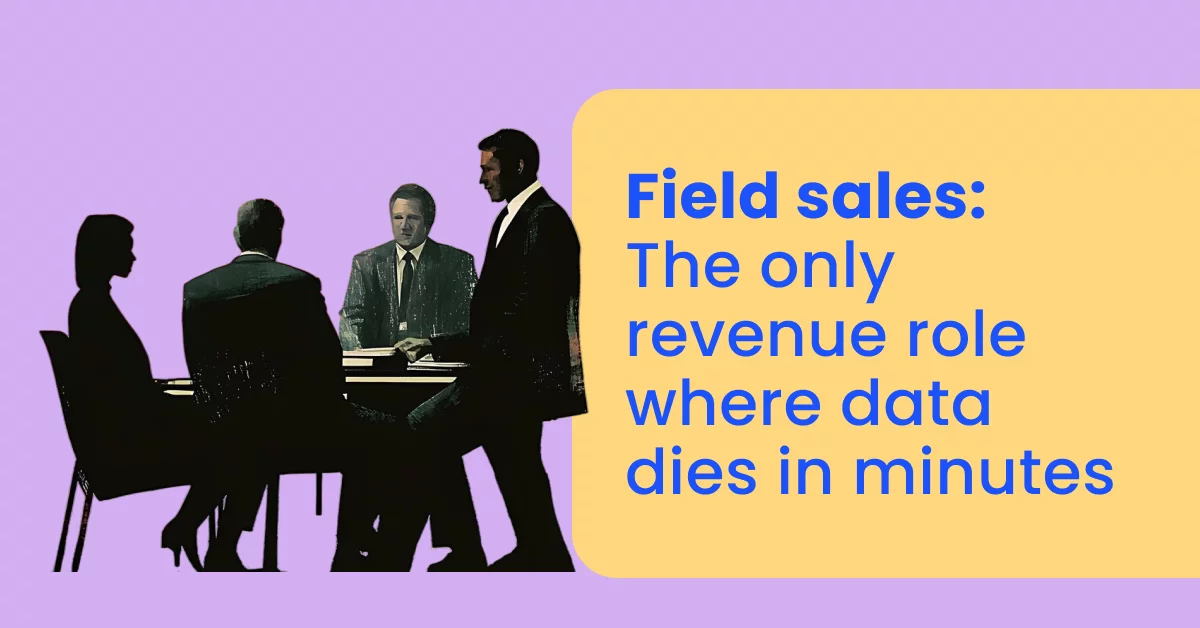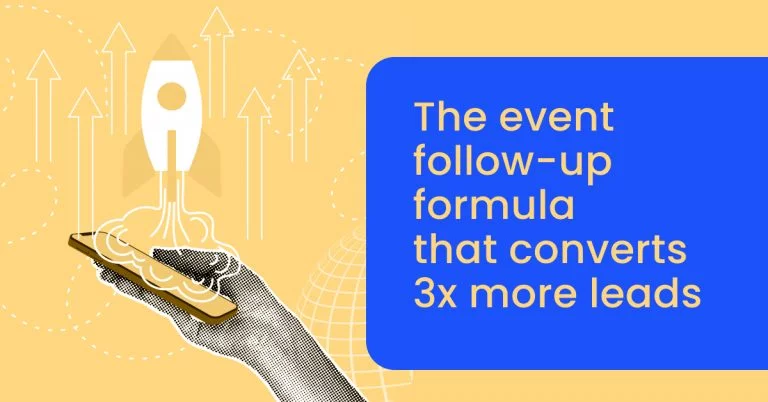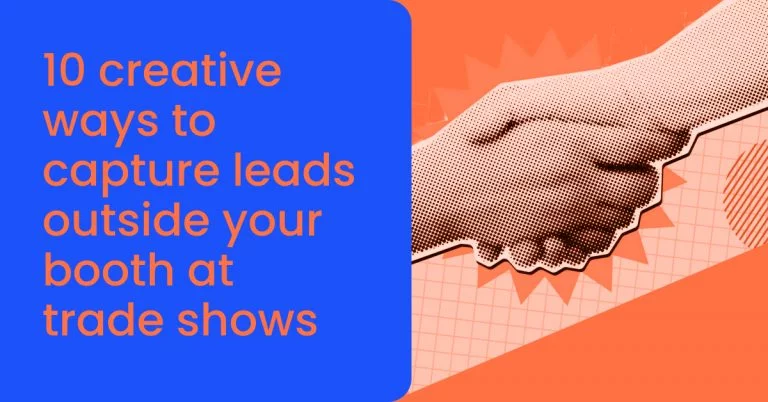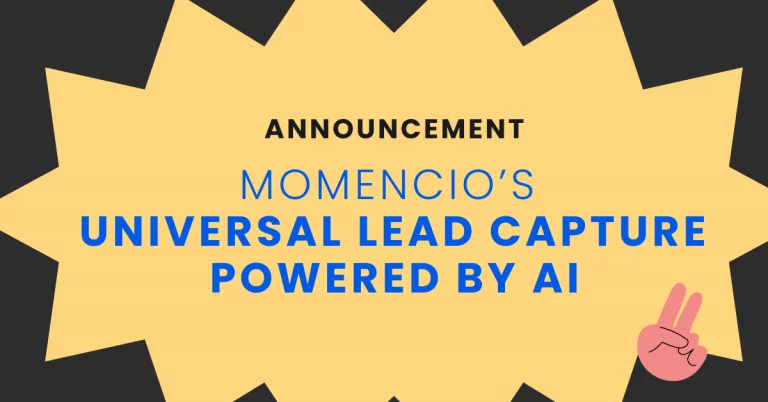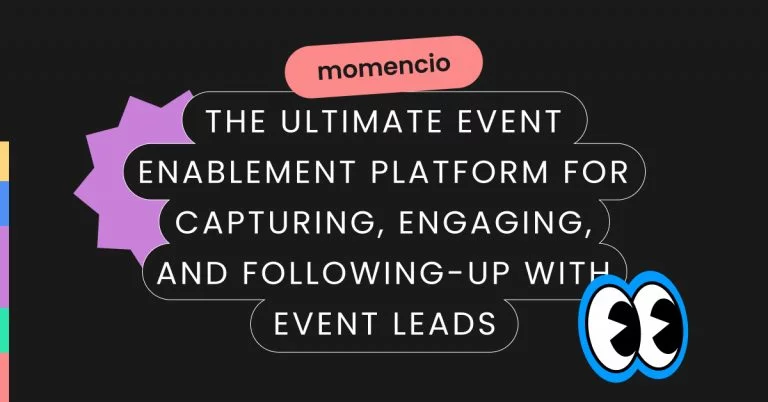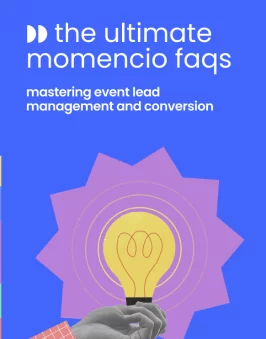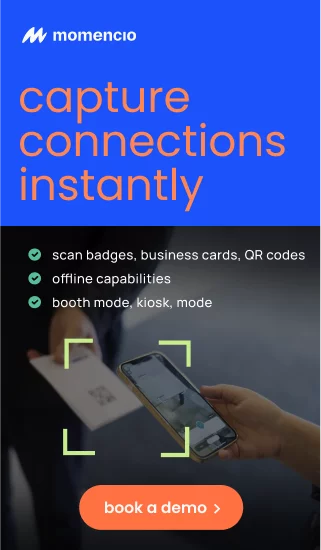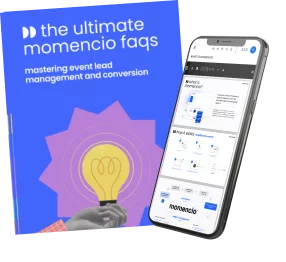Every other role in the revenue chain leaves behind a trail. Marketing runs campaigns and can track every click and impression for months. SDRs log calls, every voicemail saved, every email tracked. Customer success has surveys, NPS scores, renewal data sitting neatly in dashboards.
But field sales? You live in the only part of the revenue chain where the work disappears almost as fast as it happens.
A trade show floor looks like business, but it behaves like entropy. You’ve got hundreds of prospects streaming by, 30–90 second conversations drowned in noise, and ten distractions pulling at you while you try to qualify on the fly. Buyers say things in the moment they’ll never write in an RFP or a LinkedIn post — frustrations with a vendor, urgency about a contract coming up, the internal politics holding up a deal. That intel is gold. Yet by the time you move to the next handshake, most of it is already fading.
Here’s the brutal math no one puts on slides:
- Within an hour, you’ve lost half the detail.
- By the time you jot notes, you’ve simplified or sanitized it.
- By the time it hits CRM — if it even does — it’s stripped of tone, context, and intent.
That’s why field sales has always been called “hard to measure.” Not because the work isn’t measurable, but because the data dies in minutes.
And that decay doesn’t just cost you deals. It costs your company competitive intelligence. While marketing is patting themselves on the back for analytics dashboards and SDRs can re-listen to calls, the most honest buyer data in the business is vanishing into thin air at events.
The industry’s dirty little secret is this: when leadership says “event ROI is hard to prove,” what they really mean is “we let the most valuable data source in the company evaporate before we ever measured it.”
The hidden value of conversations
To anyone who hasn’t worked a booth, a floor chat looks like small talk and a business card. Field reps know better. In ninety seconds you collect urgency, authority, politics, budget mechanics, technical reality, risk tolerance, and emotion. None of this lives in a form fill, yet it’s the sharpest data in the revenue chain.
What really lives inside 90 seconds
- Urgency: “Our renewal is in June.” “Quarter closes Friday.” “Pilot window is October.”
- Authority: “I can sign up to $100k” versus “I need to take this to finance.”
- Politics: “Our CIO is tired of firefighting.” “Ops blocks anything custom.”
- Budget: “We’ve got discretionary this quarter” versus “Any new spend needs CFO sign-off.”
- Risk tolerance: “We cannot afford downtime.” “A week of cutover is fine.”
- Technical reality: “Two ERPs after an acquisition.” “Windows-only stack.”
- Emotional pull: Leaning in at the mobile demo. Smiling when a pain disappears in one line.
These are not “soft” signals. They are the predictors of motion in a deal.
How CRMs kill the signal
Most of this intelligence dies because we flatten it.
- Booth note: “Interested in integration. Renewal soon.”
- What actually happened: urgency, competitor frustration, budget threshold, internal politics, and emotional hooks.
A proper note should read more like this:
Renewal in June. Salesforce flows are the political north star. CIO wants vendor consolidation. Field team angry about support delays. Budget under $100k can bypass board.
That one paragraph contains more actionable truth than a spreadsheet of sanitized CRM entries.
Grading signals in the moment
Not every comment carries the same weight. Learn to grade quickly:
- Weak signal: “How would this work?” → curiosity.
- Medium signal: “We can’t add headcount.” → constraint.
- Strong signal: “Budget reserved if support SLA is missed again.” → anchored decision.
Action it while you’re still facing the prospect:
- Weak → send resource.
- Medium → set up trial/proof.
- Strong → book calendar before they leave the aisle.
Reading intent behind the same words
Questions can mean three different things depending on tone and follow-ups.
“Does this integrate with Salesforce?”
- Curiosity → mapping options.
- Deal breaker → fear of breaking flows.
- Compliance → security review and key ownership.
If you don’t label intent, the handoff misses the plot.
Body language is data
- Lowered voice = politics.
- Colleague interruption = alignment risk.
- Eyes jump to screen at workflow = emotional hook.
The failure isn’t in reading these cues. It’s that they vanish by dinner.
What’s at stake
It’s 2:10 pm on day two. You meet Apex’s director of operations.
- Friday downtime is killing the field.
- Contract with Vendor X ends in June.
- Finance can approve up to $100k without board review.
- Salesforce with heavy Flow means no custom code tolerated.
- Security colleague writes down your line about keys staying in tenant.
If you log only “Interested in integration,” you’ve thrown away the parts that make the next move obvious.
Why preserving this matters
When fidelity is captured:
- Product sees real objections.
- Marketing knows which hooks spark emotion.
- Enablement builds counters for live competitor weaknesses.
- Leadership gets a real-time market view, not a quarterly lag.
When fidelity is lost:
- Everyone steers by dashboards that look clean but miss the street.
The value is not the badge scan, it is the context. Treat the floor as a stream of high-value signals with a half-life measured in minutes. Each exchange is a packet of intelligence that can be graded, labeled, and reused — if you don’t let it evaporate.
How to capture trade show conversations before they disappear
Field sales has always faced a brutal reality: what happens on the show floor rarely survives past the day. A rep may leave an event having spoken to 100 prospects, but by the time the data gets logged, the nuance is gone. That’s why most companies keep treating events as “brand plays” instead of real pipeline engines. The problem isn’t that events lack ROI. It’s that the data disappears before ROI can ever be proven.
The shift happening now is that this no longer has to be the case. For the first time, technology exists that can capture, structure, and activate those fleeting signals in real time. Done right, field sales teams move from being the least measurable function in revenue to the single biggest source of first-party intelligence.
Why traditional notetaking fails field sales reps
Let’s be blunt: the old systems were never designed for the pace of a trade show.
- CRMs are warehouses, not capture tools. They require structured data entry long after the conversation. By then, tone, urgency, and context have already evaporated.
- Memory is biased. Reps unintentionally sanitize notes to what they think leadership wants to see. That means competitor mentions, political friction, or subtle objections rarely get recorded.
- Follow-up delays compound decay. When outreach happens days later, the conversation feels cold. The buyer doesn’t remember the energy they had at the booth, and your advantage is gone.
This is why so many “highly engaged” events still produce mediocre pipeline. It’s not the event. It’s the decay.
Real-time capture changes the game
Field reps don’t need more forms. They need systems that preserve conversations in their native state. That means:
- Speech-to-text logging that captures the exact words, without slowing the conversation.
- Automatic tagging of signals like competitor mentions, urgency cues, and emotional hooks.
- Instant enrichment that layers context from firmographics, buying stage, and prior engagement.
- Distribution across teams within hours, not weeks, so sales, marketing, and product all act on fresh intelligence.
When the full fidelity of a conversation is preserved, the rep isn’t just logging “interested in integration.” They’re passing on a live snapshot of urgency, pain, and decision dynamics.
The difference between data decay and data activation
Imagine two reps meeting the same prospect at the same event.
- If Field sales rep ‘A’ jots down “Renewal in June. Interested in integration.” By the time sales follows up, the buyer has already moved on.
- If Field sales rep ‘B’ captures the conversation live. AI tags: “Renewal in June. Frustrated with Vendor X support. Budget <$100k, CIO favors vendor consolidation. Ops head blocks custom code. Hook: mobile demo excitement.” A personalized follow-up asset is delivered before the buyer leaves the hall. Sales leadership sees the account flagged hot within the hour.
Both had the same conversation. Only one preserved its real value.
Building the intelligence loop
Every rep should be thinking in terms of loops, not logs. The intelligence loop looks like this:
- Capture: Lock signals instantly before they degrade.
- Enrich: Add context — account data, competitive landscape, prior engagement.
- Distribute: Push intelligence to sales, marketing, product, and leadership.
- Compound: Over time, create a proprietary knowledge base competitors cannot replicate.
Companies that run this loop don’t just come back from shows with leads. They come back with an asset — a market intelligence file that grows richer with every event.
Field rules for preserving conversations
This isn’t abstract. Here are practices field reps can apply tomorrow:
- The two-minute rule: log or action every conversation within two minutes. If it waits until the end of the day, you’ve already lost half the value.
- Signal tagging beats note-taking: replace long notes with compressed tags ([Renewal June], [Comp – Vendor X support fail], [Budget <$100k], [Hook – mobile demo]). Anyone in your org can read and act.
- Follow up while it’s still warm: a tailored digital asset delivered within five minutes feels personal. The same message delivered three days later feels automated.
- Think loops, not storage: don’t dump into a CRM and forget it. Every conversation should feed a loop that informs the entire company.
Why this is a competitive advantage
Every company can rent a booth. Every company can hand out brochures. Very few can systematically turn conversations into structured intelligence. That is the real differentiator.
The companies that fix this blind spot will:
- See faster pipeline velocity because urgency and context aren’t lost.
- Outmaneuver competitors by tracking objections and weaknesses in the wild.
- Align product, marketing, and leadership with what buyers are actually saying on the floor.
Field sales stops being the least measurable function and becomes the most strategically valuable.
TL; DR – Events don’t lack ROI. Companies lose ROI because they let the sharpest buyer data in the business die within minutes. Stop the decay, and you don’t just improve follow-up. You build a proprietary intelligence asset that powers the entire revenue engine.
What the future field sales rep looks like
Why field sales has been underestimated for decades
Ask any sales leader where they get the cleanest data and they’ll point to marketing dashboards or inside sales logs. Field sales rarely makes the list. The reason isn’t lack of impact — it’s lack of evidence. Trade show conversations are high in value but low in visibility. They don’t leave behind recordings, click-throughs, or surveys. By the time a rep’s notes hit CRM, the urgency and nuance have already disappeared.
This is why field sales has historically been labeled “hard to measure.” Events themselves get written off as branding plays because companies can’t connect conversations to outcomes. The blind spot was never about ROI not existing — it was about ROI never being captured in the first place.
How preserving live buyer data redefines the role
The moment you preserve these conversations in real time, the perception of the role changes. A rep is no longer just someone who shakes hands and passes leads to inside sales. They become the origin point of first-party intelligence that no other revenue function can access.
A quick example. A prospect leans in at your booth and says, “Our CIO is fed up with Vendor X, renewal in June, but ops blocks anything custom.” If that context gets preserved and enriched, you’ve just delivered actionable intelligence across three teams: sales can qualify urgency, product can understand adoption barriers, and leadership can see a competitor weakness.
When this intelligence is structured and distributed, the rep’s output is no longer a pile of cards. It’s a dataset that drives strategy. That’s a complete redefinition of the role.
The competitive advantage of turning reps into intelligence officers
Every company can rent a booth and staff it with competent sellers. Very few can convert the noise of a show floor into structured intelligence. That’s the competitive edge.
Companies that train their reps to act as intelligence officers — equipped with tools that capture and enrich conversations — will move faster in three ways:
- Pipeline velocity: urgency and intent get acted on within hours, not weeks.
- Competitive awareness: objections and competitor weaknesses surface in real time, long before analyst reports catch them.
- Cross-team alignment: marketing, product, and leadership all benefit from intelligence pulled straight from the field.
This transforms field sales from being “expensive but necessary” into “the sharpest source of market truth.”
What buyers notice when conversations are preserved in real time
The impact isn’t just internal. Buyers feel the difference when context is preserved. Instead of a generic email days later, they receive a personalized micro-site minutes after leaving your booth. It reflects their exact pain point — the frustration with Vendor X, the security concern, or the feature that lit them up.
That kind of follow-up tells them two things: you were listening, and you moved fast. In a crowded show where every buyer has 20 conversations a day, being the vendor that follows up with precision and speed is the difference between “just another booth” and “the team I want to talk to again.”
The new identity: from revenue drivers to strategic intelligence leaders
The most powerful outcome of preserving live data is the upgrade in identity. Field sales reps have long been seen as revenue drivers — valuable but transactional. Once their conversations are captured and activated, they become strategic intelligence leaders.
- They supply product teams with live objections and requests.
- They feed marketing the messaging that resonates in the wild.
- They give leadership competitive visibility no dashboard can provide.
Instead of being “hard to measure,” they become impossible to ignore. The company can’t move without their intelligence.
The takeaway is clear: if you let your conversations die, you’re just a booth worker. If you preserve them, you’re the sharpest intelligence officer in the company. That’s not a future vision — it’s already happening at organizations that treat events as intelligence engines rather than brand activations.
Don’t let your best data die
Field sales has never lacked impact — it has lacked preservation. Every conversation on the show floor is a high-value data point, and every time it evaporates, the entire revenue chain loses. The future of field sales isn’t about working harder; it’s about making sure no signal, no competitor insight, and no buyer frustration ever slips away again.
That’s what momencio was built for: to capture, enrich, and activate the conversations that define your pipeline.
Ready to see how it works? Book a demo with momencio and watch your booth turn into your company’s most powerful intelligence engine.
Interesting facts from research
- Gartner estimates that data decay costs the average business around $15 million per year — not from trade show booth more, but from stale data dragging down ROI.
- Brands leveraging first-party data see a roughly 2.9× revenue lift and 1.5× cost savings — showing how proprietary customer signals drive real bottom-line impact.
- As businesses generate exponentially more data, failing to refresh your database means you’re operating on yesterday’s signals — and losing competitive edge.
